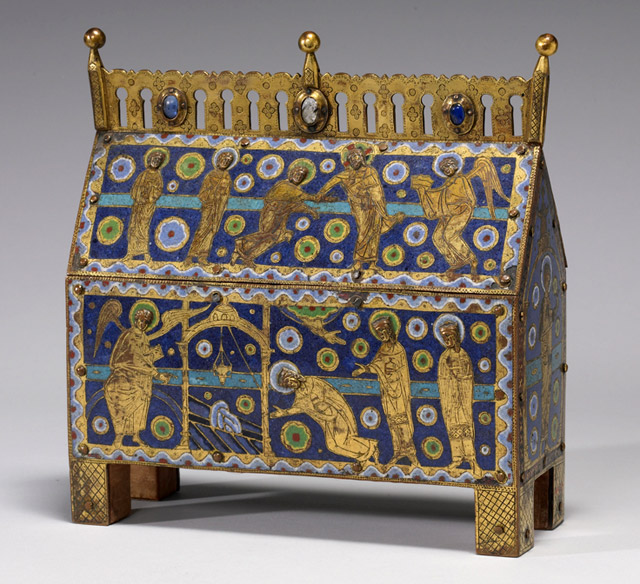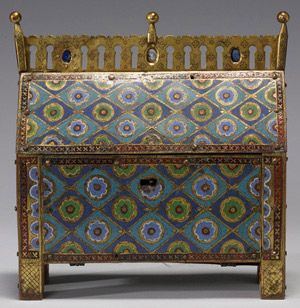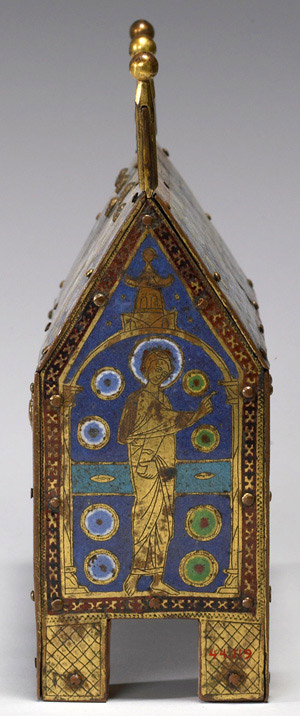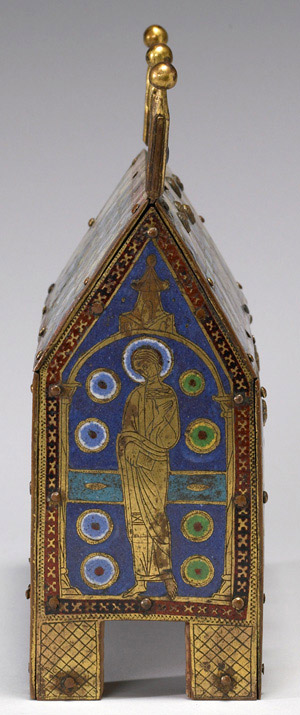Reliquary Chasse with the Holy Women at the Tomb
The Walters Art Museum, Baltimore

 Select the image to zoom
Select the image to zoom
Many medieval reliquaries are not securely tied to any particular saint. The three figures with Christ on the upper panel of this chasse lack inscriptions or any identifying characteristics. Scholars have linked this object with several saints, including St. Martial, the first bishop of Limoges. The Abbey of St. Martial in Limoges, founded in 848, was a popular pilgrimage destination throughout the Middle Ages, and a number of works of art produced in the region have been associated with Martial. It has been suggested that the figure whose arm Christ grasps in the upper panel is Martial, accompanied by his two companions, Alpinian and Austriclinian. Martial was reputed to have raised the dead and also to have had visions of Christ, episodes that complement the lower panel, where the holy women are shown discovering that Christ has risen from his tomb. However, it has also been proposed that the upper scene depicts the Harrowing of Hell, when, following his Resurrection, Christ rescued from Hell the worthy people who had died before the Incarnation. Many reliquaries depict scenes related to Christ rather than to any particular saint, so the scenes on the casket are not necessarily directly related to the relics that it originally contained. As with a number of other reliquary caskets made in this region, the gable-shaped ends of this work feature single standing figures of saints, and the back is decorated with colorful geometric patterns in enamel.







